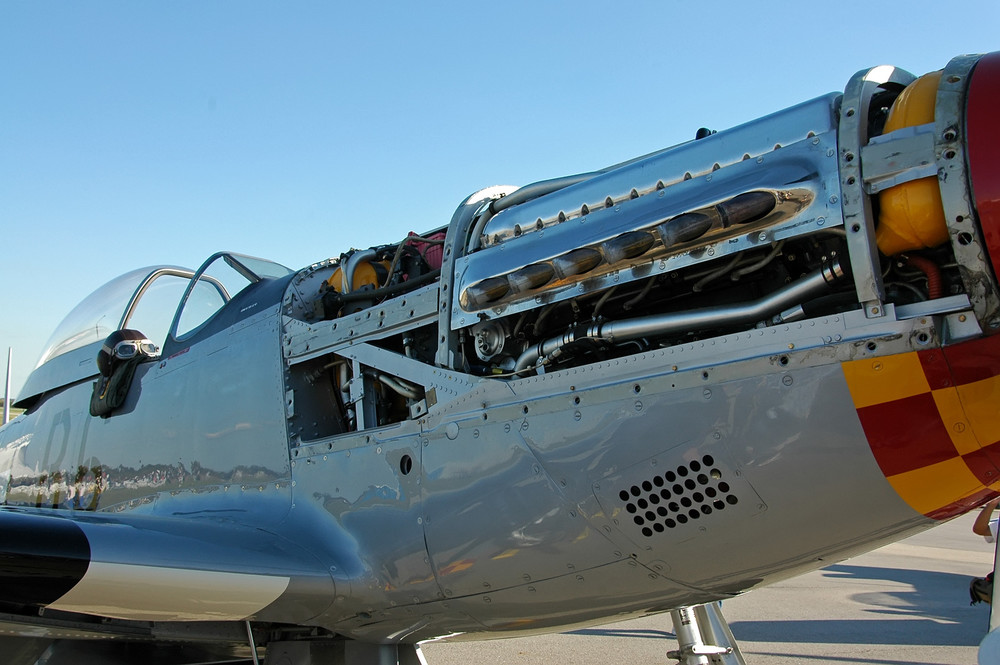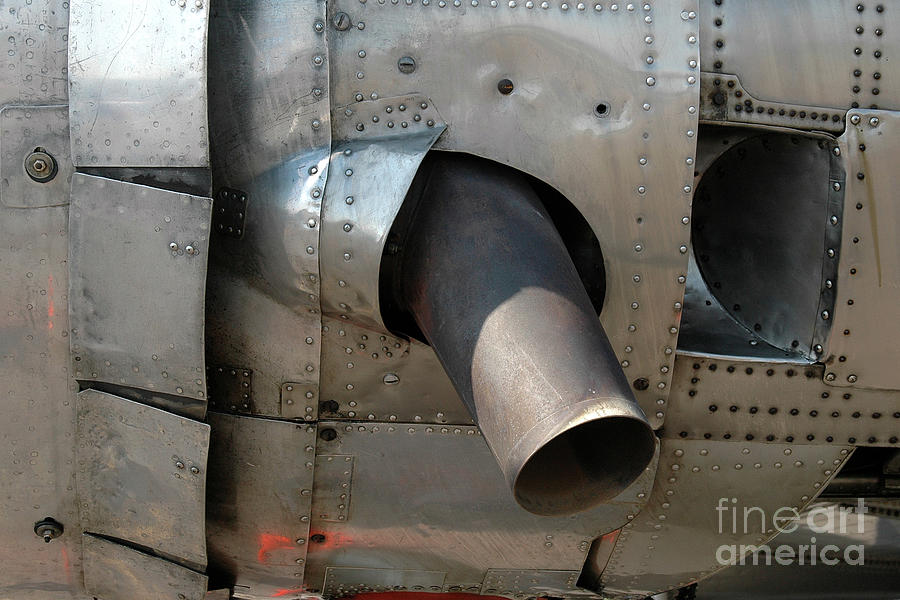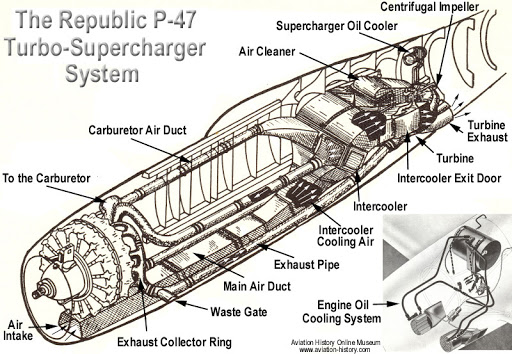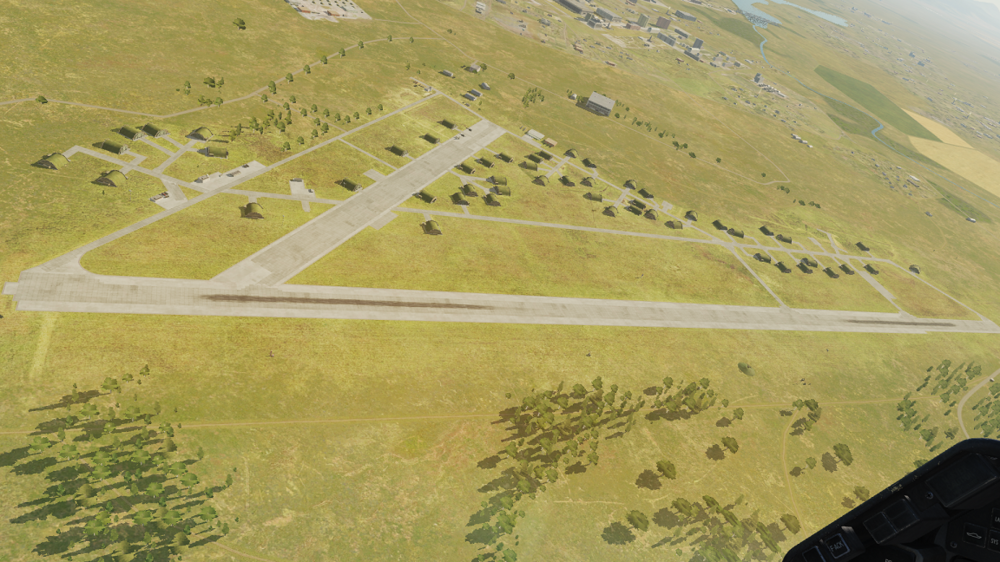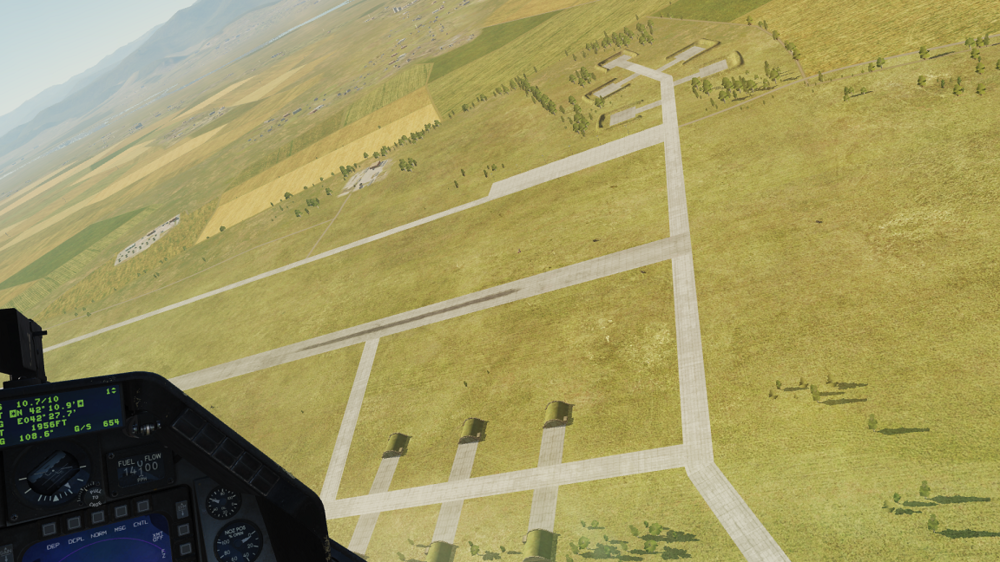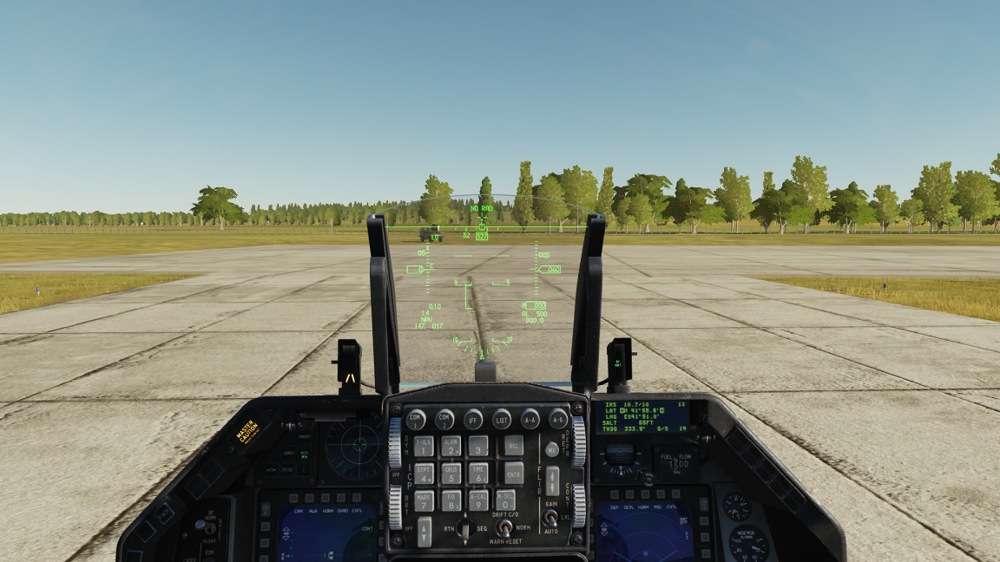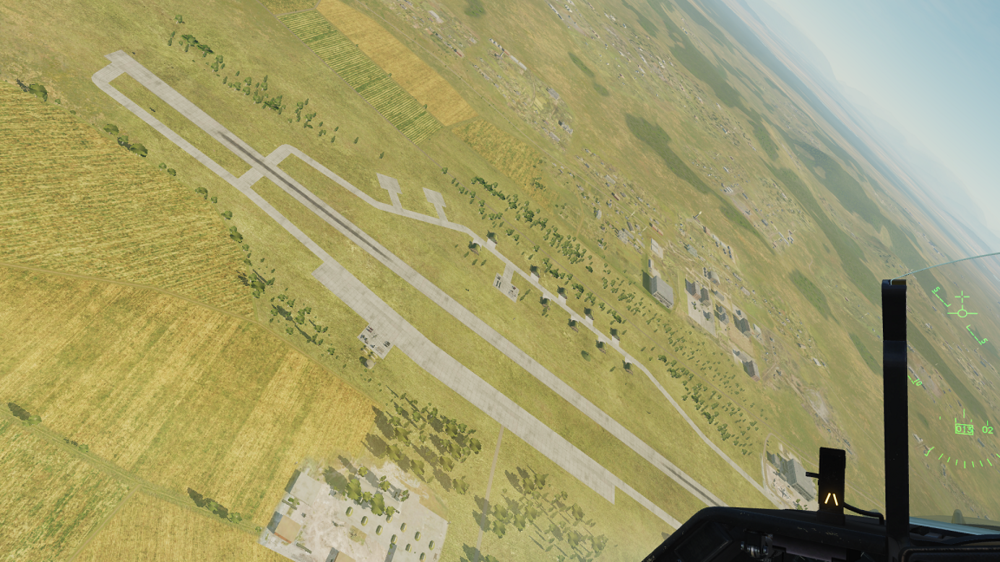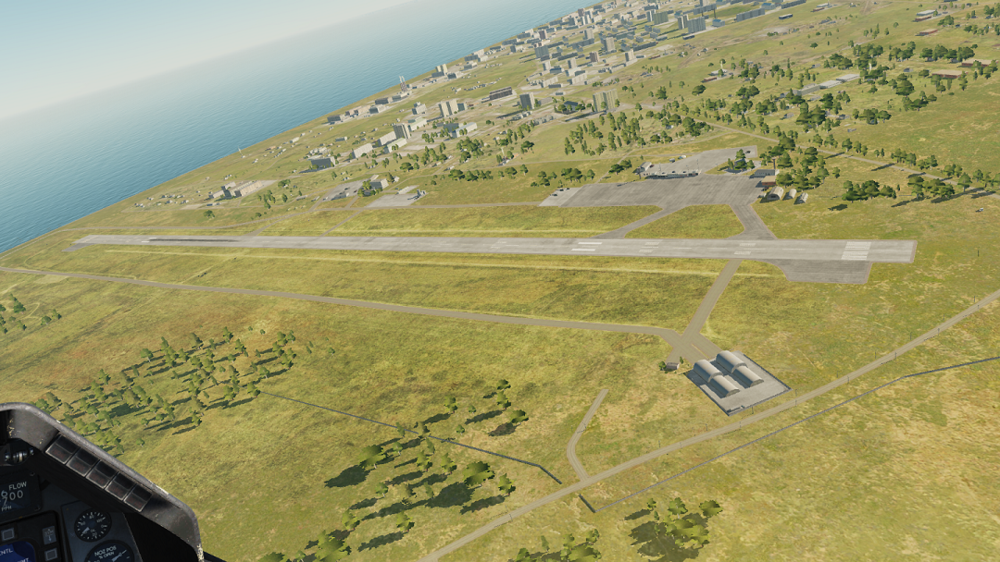-
Posts
544 -
Joined
-
Last visited
Content Type
Profiles
Forums
Events
Everything posted by Diesel_Thunder
-
Day one purchase for me as well! Really looking forward to it :thumbup:
-
Looks like last year. I found two articles that mentioned the GBU-39 bombs. It seems the Hog can carry 18 of them :D Here’s one of the articles: https://www.popularmechanics.com/military/aviation/a28928821/a-10-weapons/
-
Forgot about that one too :doh: If I recall, they had to remote mount the turbo kinda like the Jug. Except they they were on the top of the tail booms for each engine, about halfway back.
-
Turbo compounding, I like it. :) Seems a lot of material on the subject glosses over that it did have a mechanical supercharger. More emphasis is placed on that it was one of the few that had a turbo. B-17 is another one. Here's a better picture of the exhaust manifold and stack on a decowled DC-3 that I took when I was at the Lone Star Flight Museum in Texas. Helps illustrate the point of how noisy they were, because they were essentially straight piped.
-
Ducting the exhaust the way Republic did on the Jug helped reduce the noise. Most of the radials on aircraft in that era were equipped with an engine driven supercharger, with the the exhaust from each cylinder going into a collector, and then directly overboard out the exhaust stack. The stack was usually kept as short as possible. These make a fair amount of noise. V engines, such as the Merlin used on the Mustang, used a simple exhaust manifold with a very short path out of the engine. This style of exhaust makes a lot of noise. Neat factoid on the Mustang, it was found that by angling the exhaust duct rearward, they gained some thrust from the velocity of the exhaust gas (early models vented straight out). The Jug on the other hand, used an exhaust gas driven turbocharger which fed more compressed air into the supercharger (turbo-compounding). The turbo was situated in the fuselage behind the pilot, and required more exhaust piping to get there. This cut down on a lot of the exhaust noise. The only exception is if the wastegate is wide open, then all the exhaust will then go directly overboard. This would make more noise similar to a typical supercharged installation on other aircraft. Here's a couple of pictures to illustrate this. The first picture shows the short exhaust stacks of the Mustang. The second picture shows the exhaust stack of a DC-3/C-47, note that the stack outlet is aft of the cowl flaps. The stack is also located on the outboard side of the cowlings directing the exhaust (and noise) away from the fuselage and crew. The third picture is a diagram of the exhaust system of the Jug. Note the location of the wastegate outlet and where the turbo is. Given how far the exhaust gas has to go and the plumbing involved to get to the turbo, this helped attenuate the noise from the engine.
-

Navigation technologies in the Pacific Theater of Operations.
Diesel_Thunder replied to Tiger4-2's topic in Pacific Theatre
LORAN was one of the early radio navigation technologies used in the war, mostly in the Pacific theater. It was steadily improved on over the years, evolving into LORAN-C in the 70's. Some further experimentation was done (LORAN D and F) but never made it further than C mostly because satellite technology was evolving in the late 70's. https://en.wikipedia.org/wiki/LORAN My service (USCG) operated a number of the stations until 2010 when it was shut down permanently. -
I understand, though where i was going with that is by staying near your airfield, when you get the bingo warning that you proceed to land immediately. 2k bingo gave me a good amount of practice time, plus enough fuel that I wasn't stressed about making it to base to refuel. The key is to stay within 20 miles. At the time that I practiced it, I used Kobuleti in the Caucasus map given it's proximity to water. For those practice sessions, I had no weapons loaded, and focused solely on my airwork.
-
Three thing that also helped me most out was breaking down individual stages of the landing pattern, and just working on the fundamentals: 1 - Ignore the boat. Set your bingo fuel to 2k. Take off from an airfield near water, and then go fly over the water at 800 feet. Get into landing configuration (hook, gear, full flaps, and on AoA) and work to maintain that 800 feet. This teaches you to work the throttle in order to maintain altitude. Your going to constantly work the throttle. Then do level turns at 30º bank. Turn 180º while maintaining 800 feet. Using cardinal directions (N, S, E, W) simplifies the math for your turns. Once you get the hang of that, do straight descents down to 600 feet, and then climb back up to 800 feet. Keep practicing the climbs and descents. Once you get that down, then do descending 180º turns, again 800 down to 600 feet. Keep practicing, and head back to your airfield for fuel once you get the bingo warning. Repeat as needed. 2 - Ignore the boat. Set your bingo fuel to 2k. Take off from an airfield near water, and then go fly over the water at 800 feet. Except this time, you are going to practice nothing except the break turn. Pick two opposing cardinal directions (N and S, or E and W) and fly that heading at 350 kts. When ready, throttle to idle, speed brake out, left bank to ~70º, and pull ~3G. Watch your attitude to maintain 800 feet. Gear out at 250, shallow your bank angle to 30º, half flaps at 220. Your speed brake should retract automatically when your flaps deploy, Full flaps around 190-180 kts. Stop your turn at 180º and get on trim and AoA. Hopefully you stayed at 800 feet throughout that turn. Fly like that a bit, then throttle up and clean up the aircraft (flaps up, gear up). Get back to 350 kts and do it again and again until you get the bingo warning. Land for more fuel and repeat as needed. 3 - Ignore the boat. Pick an airfield, and practice touch and gos. Use the TACAN to help gauge your distance from the field. When I did this, I would climb to 5,000 feet and do a long final. A 3º glideslope translates to about 300 feet descent per mile, 5,000/300=16.67 mile final. Once I got comfortable doing that at 5k feet, I dropped down to 4k and continued to practice, only reducing altitude as I got more confident. Refuel as needed, I ended up burning several tanks of fuel doing this. Once you get comfortable with that, then try to do Case 1 landings on the boat. It's going to take a lot of practice. My three practice techniques above can be boring, but helped me to develop the skills needed. One other thing I learned the hard way, is that the bank angle scale at the the bottom of your HUD is not marked in 10º increments. It's marked off in 15º increments, with two little ones marking 5º. Not knowing this at first caused my turns to be too steep. Also, stop practicing if you are getting frustrated, take a break from it. Go blow stuff up for a while and come back to landings another time.
-
Oh, I agree with you. It took me a while to get the timing and technique correct for the flare. I've planted the Viper hard quite a bit before I got the hang of it. Have done the same with the Hog after I got it a few years ago. I've collapsed the gear on the Hog (nose gear once, and either main several times), and have bent it as well to the point that it wouldn't retract. Not to mention quite a few blown tires. Other than a tire, I have yet to damage the gear on the Viper on landing. And the Viper's gear is likely not as sturdy as the Hog, and definitely nowhere near what the Hornet has.
-
The Viper is very easy to tip, but that stems from it’s design. The L/G has a very narrow wheelbase, and the C/G is above the wheels. Turning to fast and/or too sharp will put it on it’s side. If you have a 90° turn, it’s good practice to slow to 10-15 kts before turning. That’s good practice in most aircraft as it helps in not excessively side loading the gear. For flaring, if your on speed and AoA, watch your radar altimeter, at 50’ AGL throttle down and gently pull up. Bring the boresight cross a few degrees above the horizon line and the mains will touch down first. Rudder to maintain directional control and use elevator to maintain the boresight cross 10°-12° for aerodynamic braking until speed bleeds down and you can’t keep the nose up anymore. Be careful not to bring the nose up too high or you’ll scrape the engine nozzle on the ground. Engage NWS below 50 kts. The thing that clicked for me was at the flare to pay attenttion to the boresight cross and not the velocity vector.
-
The Hornet has a far more rugged gear, given that it is designed to land on carriers. And a carrier landing isn't so much a landing, more like an "arrival". I have bent and damaged the gear, and had popped tires plenty of times in the Hog, which itself is a more stout aircraft than the Viper. Admittingly, most of the gear and tire damage on the Hog was my own doing from being a bit ham fisted on landings, more so than combat damage, especially early on when learning the Hog. Now that this topic was brought up, I never realized that I've hardly ever damaged the gear on my Viper, if at all.
-
@Muas, I would recommend getting a new SSD just for DCS if you can. When I built my current machine, I initially built it with a single 250 GB SSD. Between DCS and a few other games I play, I was quickly running out of space. Added a 500 GB normal drive to help offload some stuff from the SSD. That worked for a while until it came to a point where I had to decide between installing maps or planes (which I bought on sale) as I was low on SSD space again. Ending up buying another 250 GB SSD (Crucial MX250, $50) just for DCS. Well worth the cost of the drive so that I can use all the modules I bought, and I have room for more later like the Marianas map. The aircraft certainly don't take up as much room as the maps do
-

[REPORTED]Vaziani no longer has runway markings?
Diesel_Thunder replied to AstonMartinDBS's topic in Object Bugs
-

[REPORTED]Vaziani no longer has runway markings?
Diesel_Thunder replied to AstonMartinDBS's topic in Object Bugs
Runway/taxiway markings missing on some airfields in Caucasus I am on Open Beta 2.5.6.52196 and I just noticed this on the Caucasus map. Kobuleti is my "home" field on this map, and saw yesterday after starting up my Viper and taxiing out, that the taxiway markings were missing. Runway markings were missing as well when I got there. I flew around a bit and checked out the three nearby fields; Batumi, Senaki-Kolki, and Kutasi. Batumi had the proper markings but was missing the runway numbers, while Kolki and Kutasi had no markings. I ran a repair this morning to make sure I didn't have any corrupted files and checked again. The markings are still missing. I also checked this flying in the Hog and Hornet with the same results. Screenshots attached. -

Used to load and fly the A10-C without this issue
Diesel_Thunder replied to Ramstein's topic in DCS: A-10C Warthog
I agree with QuiGon, no need to cycle power to the CICU. You just need to bring up the load page again. To bring up the load page again on your DSMS, you need to re-assign an MFCD OSB in order to bring up the LOAD page : Wait until you are re-armed and then push and hold one of the lower OSB's on either MFCD. After a moment you'll get new options on the right side OSB's. Let go of the button at this point. Select a new function, LOAD in this case, and then then click one of the lower OSB's to assign LOAD to that OSB. Then push that OSB to bring up the load page, and then select LOAD DSMS. Wait for that to finish and your new weapons will be in your DSMS. After this process your re-assigned OSB will revert back to what is normally on that button once you select a normal page (TAD, DSMS, etc). -
If I am not mistaken, there is one drawback to using bypass mode. If you are shooting off flares and chafe using that mode, the computer does not track or count how of each are left. Using any of the normal modes, even manual, and the system maintains a running count of the remaining countermeasures.
-

Harder to visually spot bandits?
Diesel_Thunder replied to BattleAxes Skinner's topic in DCS: F-16C Viper
It's an option in the settings menu for the Viper for the canopy tint. -

Collision beacon power ON/OFF behavior on ground
Diesel_Thunder replied to DmitriKozlowsky's topic in DCS: F/A-18C
MadCat, if I am not mistaken, the red beacons (tail and belly) are turned on prior to engine start. These stay on as long as engines/props are turning to warn anyone on the ground nearby. The strobes (really bright white lights) are turned on when taking the active runway, crossing a runway, and during flight for visibilty. These stay on unless the lights affect the pilots vision (clouds/fog, etc.). It seems a lot of military aircraft deviate from the normal lighting designs compared to the civil aircraft side of things. -
I made my own head tracking using a modified PSEye camera and an LED clip, both purchased on Amazon for $40 total. The software I use is OpenTrack (free). I have used TIR5 at a friends house, and I can't tell much of a difference between TIR5 and my OpenTrack setup. I could not go back to flying without head tracking, it just adds a whole new level of immersion. If I am not mistaken about TIR5, doesn't it come with a 50% coupon for any item in the ED store?
-

Anyone willing to help me with Landing/Angle of Attack
Diesel_Thunder replied to bunraku's topic in DCS: F/A-18C
I don't think it's a cheat, just an alternate technique to help prevent ballooning. Full flaps is the goal while getting the speed down so you can get on AoA. Me personally, I find that going to ½ and then full helps maintain altitude better than going full flaps all at once. I don't believe that either technique is wrong, and there is nothing in the NATOPS that says you have to do it one particular way. Dropping full flaps in the turn can definitely help prevent ballooning as much as opposed to doing that while horizontal. To be fair, that was a Super Hornet in that video. I don't know if the SH has finger lifts on the throttles to go into burner. If it does, then based on the position of that pilots hand, it seems like he just went to MIL power and not A/B. I believe you are supposed to throttle up just prior to touchdown to allow the engines enough time to spool up in case you bolter. -

Anyone willing to help me with Landing/Angle of Attack
Diesel_Thunder replied to bunraku's topic in DCS: F/A-18C
Here's a great real life example. Watch the throttles on this video, you'll see that they are never still until after he is on deck. -

Anyone willing to help me with Landing/Angle of Attack
Diesel_Thunder replied to bunraku's topic in DCS: F/A-18C
I just watched that and noticed a few things. That is what my earlier landings looked like when I first got the Hornet. At 0:20 when you dropped the gear and flaps, your aircraft pitched up significantly. Completely normal at that speed. The Hornet's flaps are very large and generate a lot of lift. Better technique is to throttle to idle, speed brake out, and gear out at 250. Flaps to half between 200-220 kts, full around 180 kts. That helps prevent the significant pitch up. You can use forward stick to counter that and keep your velocity vector on the horizon, easing back as your speed comes down. At 2:40 you are re-trimming the aircraft, and ended up over 9.3º AoA. Once your are on trim with the orange donut on the AoA indexer and centered on the E bracket, you don't need to touch the trim. Also, don't pitch with the stick. You can use a little bit of stick for minor pitch corrections like when entering or coming out of turns, but no large movements as this throws off your AoA. At 3:15 you were well above glideslope, but added power. This kept you above glide slope. You're AoA was too high as well. At 4:08 that alarm was just your radar altimeter, letting you know that you just descended below what it was set to. Thank you for putting the control overlay on screen. Watching that I did notice that you are not working the throttle as you should be. Once you are on AoA, all vertical corrections are done with throttle (ascent, descent, maintaining glide slope). Your AoA will stay centered as long as you don't pitch with the stick. You are going to constantly be sawing on the throttle, you won't ever be able to find the sweet spot throttle setting to maintain glideslope. You shouldn't be doing large throttle movements, just small ones, but constant movement. If you find yourself drifting off glideslope, briefly add more or less power as needed and go back where you can maintain your glideslope. The throttle thing is not a quirk of the flight model in DCS. Videos I've watched of real Hornet pilots doing this, you can see they constantly are working the throttle as well. A lot of this will become second nature to you as you gain familiarity with the Hornet. Keep practicing! :joystick: -

Anyone willing to help me with Landing/Angle of Attack
Diesel_Thunder replied to bunraku's topic in DCS: F/A-18C
@bunraku I am new at this as well, and have been practicing this for about 3 weeks and still stink at it. The new Super Carrier is tougher than the old Stennis as well. Two videos that helped me out a lot and break it down are from Lex, and Jabbers: Bankler's excellent training mission for Case 1 landings is very helpful as well. It grades and gives feedback on all phases of the landing (initial, the break, downwind, the turn, and the groove). That mission uses the old Stennis, and is available here: https://forums.eagle.ru/showthread.php?t=221412 Three thing that also helped me most out was breaking down individual stages of the landing pattern, and just working on the fundamentals: 1 - Ignore the boat. Set your bingo fuel to 2k. Take off from an airfield near water, and then go fly over the water at 800 feet. Get into landing configuration (hook, gear, full flaps, and on AoA) and work to maintain that 800 feet. This teaches you to work the throttle in order to maintain altitude. Your going to constantly work the throttle. Then do level turns at 30º bank. Turn 180º while maintaining 800 feet. Using cardinal directions (N, S, E, W) simplifies the math for your turns. Once you get the hang of that, do descents down to 600 feet, and then climb back up to 800 feet. Keep practicing the climbs and descents. Once you get that down, then do descending 180º turns, again 800 down to 600 feet. Keep practicing, and head back to your airfield for fuel once you get the bingo warning. Repeat as needed. 2 - Ignore the boat. Set your bingo fuel to 2k. Take off from an airfield near water, and then go fly over the water at 800 feet. Except this time, you are going to practice nothing except the break turn. Pick two opposing cardinal directions (N and S, or E and W) and fly that heading at 350 kts. When ready, throttle to idle, speed brake out, left bank to ~70º, and pull ~3G. Watch your attitude to maintain 800 feet. Gear out at 250, shallow your bank angle to 30º, half flaps at 220. Your speed brake should retract automatically when your flaps deploy, Full flaps around 190-180 kts. Stop your turn at 180º and get on trim. Hopefully you stayed at 800 feet throughout that turn. Fly like that a bit, then throttle up and clean up the aircraft (flaps up, gear up). Get back to 350 kts and do it again and again until you get the bingo warning. Land for more fuel and repeat as needed. 3 - Ignore the boat. Pick an airfield, and practice touch and gos. Use the TACAN to help gauge your distance from the field. When I did this, I would climb to 5,000 feet and do a long final. A 3º glideslope translates to about 300 feet descent per mile, 5,000/300=16.67 mile final. Once I got comfortable doing that at 5k feet, I dropped down to 4k and continued to practice, only reducing altitude as I got more confident. Refuel as needed, I ended up burning several tanks of fuel doing this. Once you get comfortable with that, then try to do Case 1 landings on the boat. It's going to take a lot of practice. :joystick: My three practice techniques above can be boring, but helped me to develop the skills needed. One other thing I learned the hard way, is that the bank angle scale at the the bottom of your HUD is not marked in 10º increments. It's marked off in 15º increments, with two little ones marking 5º. Not knowing this at first caused my turns to be too steep. Also, stop practicing if you are getting frustrated, take a break from it. Go blow stuff up for a while and come back to landings another time. That is a good ballpark figure to use, and you can even figure out how long your approach will be based on altitude. Just divide your start altitude by 300. For example, 4,000 feet divided by 300 equals 13.3 miles. So if you start at 4,000 feet, you should begin your descent around 13 miles out. -
I used turn too tight as well, until I learned that the bank scale at the bottom of the HUD is marked off in 15º increments, and not 10º like I thought (you have two little ones on either side of zero that indicate 5º). In essence I was turning at 45º, adding too much power to maintain altitude and getting to fast. Got it, thanks. I guess this is something a pilot develops over time with practice. I think I was looking more for if when I do look at the 90, if I should see the boat at a certain point in relation to the canopy bow as a quick reference that I'm on the right track.
-
On a Case 1, after the downwind and you are in the 190º turn to final, what does a pilot expect to see 90º into the turn as long as everything is normal? When on the final turn, I don't look at the boat until after 90º, but I don't have the experience to know what to look for and if I need to steepen or shallow my turn, and I've never seen this explained anywhere either.



